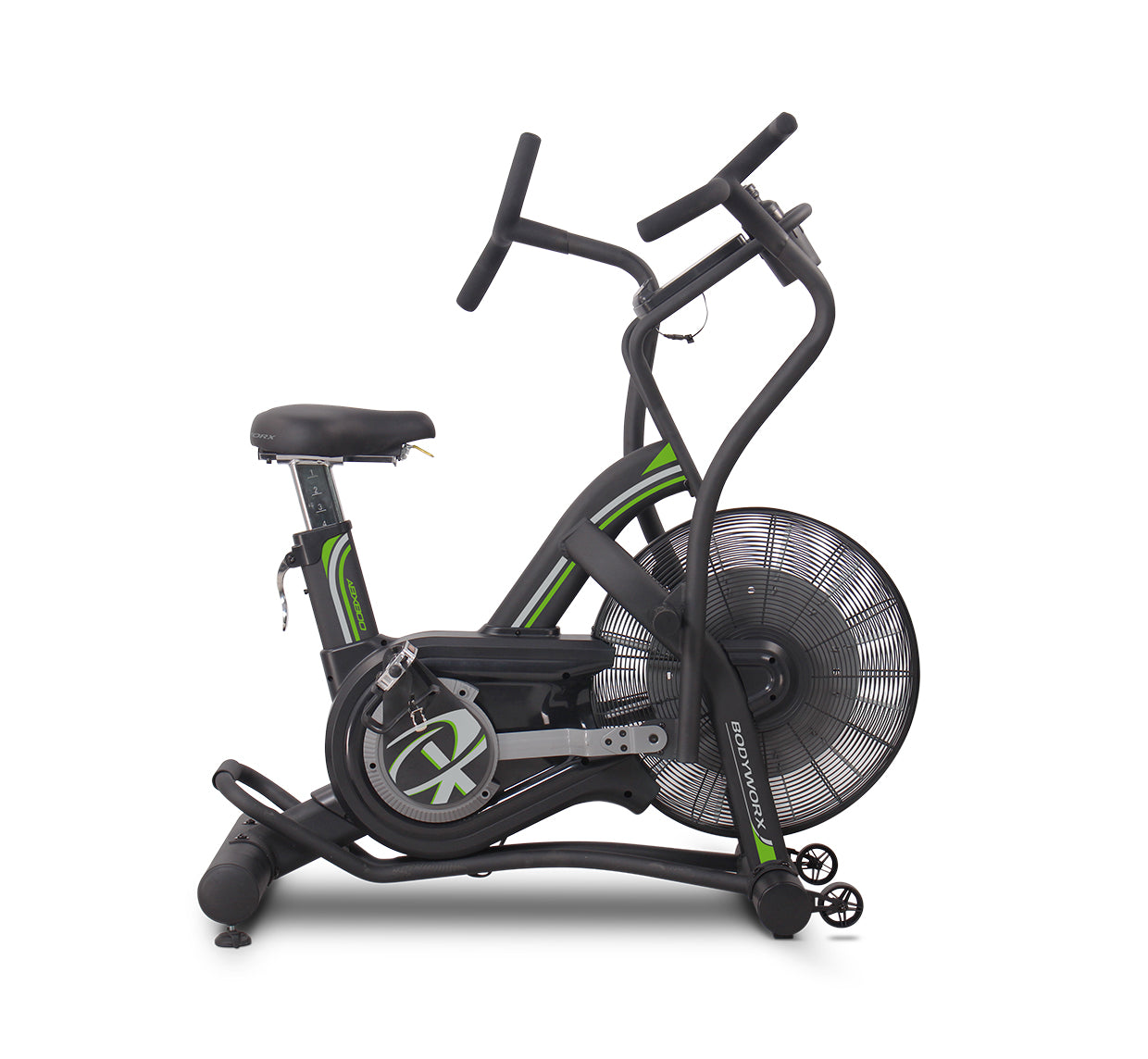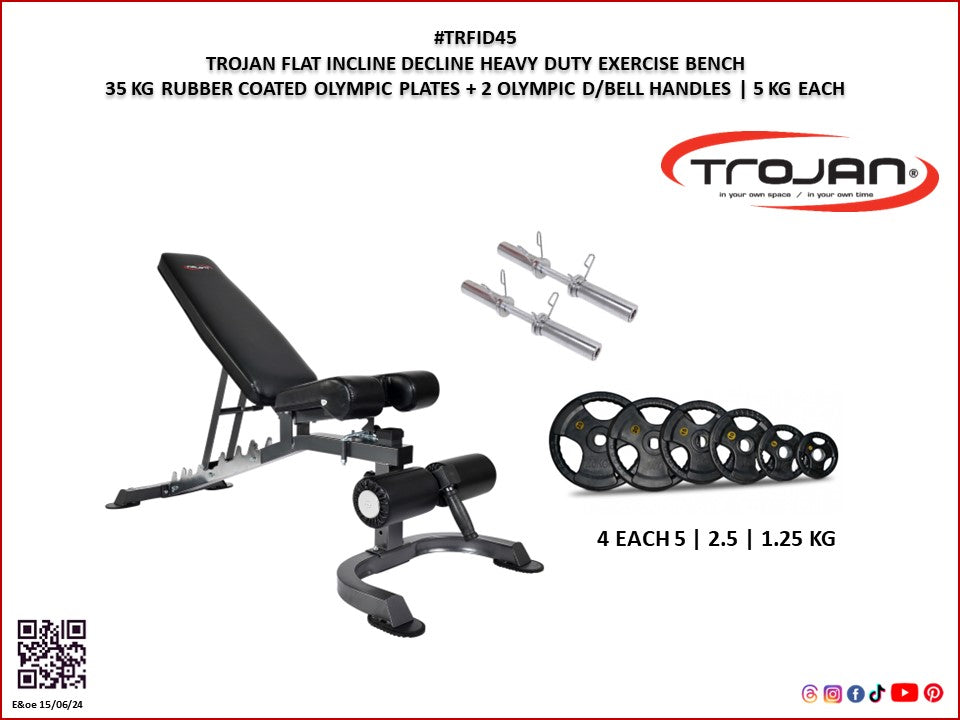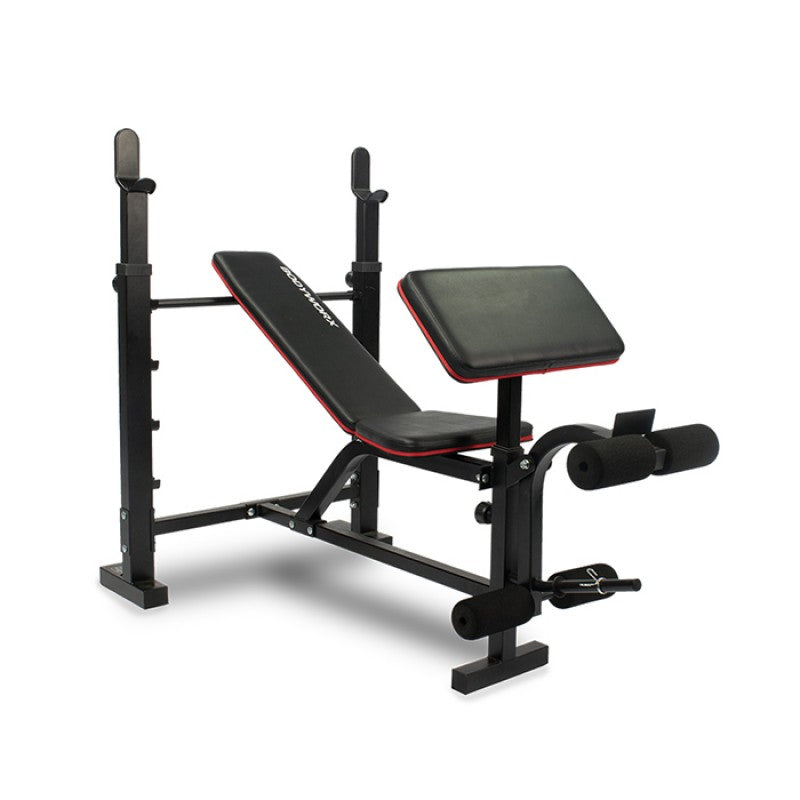Want stronger, more powerful legs without stressing your lower back? The leg press is one of the best tools for building big quads and glutes safely.
Here’s your ultimate leg press exercise guide. If you’re here, it’s because you want a better understanding of this lower-body exercise or just clarity on some common questions about this popular workout.
Let’s go right in and break it all down so you can hit your next leg day with confidence.
Quick Facts About Leg Press Guide
- Main Muscles: Quadriceps (all heads), glutes, hamstrings (plus calves and adductors).
- Uses: Ideal for isolating legs, building quad/hypertrophy safely under load, and volume training.
- Great For: Beginner form practice, high-volume sets, injury rehab (low back support).
- Read Time: 8 minutes.
Why Do the Leg Press?
The leg press is a powerhouse lower-body exercise that lets you load your legs safely.
Because your back is supported, you can push heavier with less spinal stress compared to squats. This makes it perfect for high-volume training or when rehabbing, since you can fatigue your quads and glutes intensely without taxing your core.
In fact, leg press EMG (electromyography) studies show very high quadriceps activation, particularly vastus lateralis/medialis. Plus, swapping foot placement shifts emphasis to specific muscles. For example, a wider stance boosts glute and hamstring engagement. In short, the leg press isolates the legs, letting you crank out heavy sets for bigger quads and glutes.
Keep reading to learn form, benefits, and programming tips to make the most of every rep.
Quick Safety Checks Before You Start Leg Press
- Keep your lower back flat on the pad. Never let your hips lift.
- Stop just before full knee lockout. Keep a slight bend at the top to avoid knee hyperextension. Don’t force knees inward or let them collapse.
- Control the weight on the way down (3–4s eccentric). No bouncing. Hips and heels drive down; knees align with toes.
- Adjust seat so start position is 90° at the knees.
- If you have acute knee or back pain, use very light load or consult a clinician.
3 Quick Form Checks
Before each set, make sure:
- your shoulders, hips, and heels are firmly on the seat
- your knees stay in line over your toes
- your back remains flat on the pad
How to Do the Leg Press: 7-Step Guide
To do the leg press, sit with your back against the pad and feet shoulder-width on the platform. Support your core, press through your heels, and extend your legs, stopping just before fully locking your knees. Lower under control and repeat.
Ready to jump on the machine? Let’s go step by step.
Step #1: Set the Machine:
Sit with hips back and lower back pressed into the pad. Adjust the seat so you start with knees bent about 90°. Feet shoulder-width on the plate, heels firm.
Pro Tip: If you’re too cramped or feel pinching, slide the seat back a notch.
Step #2: Foot Placement:
Place feet shoulder-width or slightly wider, toes straight or slightly out. For most goals, shoulder-width works. To emphasise glutes/hamstrings, a higher or wider foot position later will help.
Troubleshoot: If knees track inward, point toes slightly out or adjust stance width.
Step #3: Brace & Grip:
Grip the side handles and brace your core like someone’s about to punch you in the gut. Keep your spine neutral and chest proud. This stability will power the push.
Pro Tip: Breathe in at the bottom to create intra-abdominal pressure. Then breathe out as you push.
Step #4: Unlock the Safeties:
Take a deep breath and unlock the machine’s safety pins or locks.
Pro Tip: Always do this with control; don’t let the sled crash.
Step #5: Press (Concentric Phase):
Drive through your heels and mid-foot, pushing the platform away. Extend your legs upward in a smooth, controlled motion. Focus on activating your quads and pushing your knees slightly forward, not letting them collapse. Stop just before your knees fully lock out.
Pro Tip: For hypertrophy, use a moderate pace; e.g. 1s up, 3s down. Heavier sets may be slower and deliberate.
Step #6: Lower with Control (Eccentric Phase):
Bend your knees and lower the sled slowly until your knees are about 90°, or until you feel a good stretch in the quads. Don’t drop the weight. Control it so you keep tension on the muscles. Keep your back flat and hips down.
Troubleshoot: If your lower back rounds off the seat, lighten the weight or shorten your range-of-motion.
Step #7: Re-Rack Safely:
Once your set is done, re-engage the safety catches before fully releasing your grip. Check that the sled is locked before you sit up or reposition.
How Much Should You Press? Norms & Practical Load Guidance
Pressing strength varies widely, but here are rough norms. These include the weight of the sled/plate holders:
|
Strength Level |
Men’s Load |
Women’s Load |
Bodyweight Ratio |
|
Beginner |
71 kg (157 lbs) |
37 kg (82 lbs) |
1.0× (male), 0.5× (female) |
|
Novice |
123 kg (271 lbs) |
71 kg (157 lbs) |
1.5× (male), 1.0× (female) |
|
Intermediate |
193 kg (425 lbs) |
117 kg (258 lbs) |
2.5× (male), 1.75× (female) |
|
Advanced |
278 kg (613 lbs) |
175 kg (386 lbs) |
3.5× (male), 2.75× (female) |
|
Elite |
375 kg (827 lbs) |
241 kg (531 lbs) |
4.75× (male), 3.75× (female) |
So, what’s a good leg press weight?
A good leg press weight depends on your level:
- Beginners: 50–75% of body weight (challenging but manageable).
- Intermediate: ~425 lb (193 kg) for men, ~258 lb (117 kg) for women.
Increase weight gradually (5–10% weekly), keep form strict, and remember to count the sled weight (often 20–50 kg).
Leg Press Foot Placement & Muscles Worked
The leg press primarily hits your quadriceps, with solid secondary work for glutes and hamstrings.
Changing foot placement alters emphasis:
- Higher foot position shifts load to glutes/hamstrings.
- Lower placement stresses the quads more.
- Wide stance (feet higher and apart) recruits inner thighs (adductors), glutes and hamstrings more. May strain knees if too wide.
- Narrow stance targets the outer quads (vastus lateralis) harder, but can increase knee stress.
Leg press targets all three quad muscles (vastus medialis, lateralis, intermedius) and rectus femoris strongly. Glutes and hamstrings contribute especially when feet are placed higher or wider. Keep experimenting with stance / posture (see variations below) but always prioritise form and knee tracking.
7 Best Leg Press Variations & When to Use Them
1. Standard Leg Press (Shoulder-Width):
Place your feet about hip-width on the middle of the platform; this stance trains both quads and glutes evenly for most lifters.
Programming: 3–4 sets of 8–12 reps.
Safety: Keep knees in line with toes.
2. Wide Stance Leg Press:
Put your feet wider than shoulder-width and point your toes slightly out to shift more load onto your inner thighs and glutes.
Cue: Use a full ROM. Sets of 10-15 with moderate weight.
Note: Can be harder on hips/knees if too wide; warm up hips first.
3. Narrow Stance Leg Press:
Place your feet close together near the center of the platform to target the outer quads and challenge knee stability.
Cue: Keep knees aligned, control descent.
Note: Increased knee flexion; avoid if you feel knee pain.
4. High-Foot Leg Press:
Set your feet high on the plate so your hips drive the movement and your glutes and hamstrings do more of the work.
Cue: Think “hips push,” not just knees.
Programming: 3–4 sets of 8–12. Safety: Depth is limited by hip flexibility.
5. Low-Foot Leg Press:
Put your feet low on the plate (heels near the bottom) to place extra emphasis on the quadriceps and get a deeper knee bend.
Cue: Push through toes for maximal quad stretch.
Note: Demands good ankle mobility; can increase shear on knees. Use lighter weight if form breaks.
6. Single-Leg Press:
Place one foot on the plate and press with a single leg to correct imbalances and force stabilisers to work harder.
Cue: Keep hip/knee lined; press and lower slowly.
Benefit: Forces stabilizers to engage and doubles glute/ham focus. Sets: Try 3 × 10-12 each leg.
7. Paused or Tempo Press:
Use a 1–2 second pause at the bottom (or a slow tempo) to increase time under tension and improve control.
Cue: Explode on concentric after a full pause.
Benefit: Builds stability and constant tension.
Leg Press Programming & Workouts: Sets, Reps and Progression
We program sets using RPE (Rate of Perceived Exertion); a simple way to rate how hard a set feels on a scale (usually 1–10). So, lifters can judge and autoregulate their effort based on how the leg press feels on any given day. It helps you plan intensity and know how many reps you have left in reserve (RIR). For example:
- RPE 10 = max effort, 0 reps left (failure).
- RPE 8 = hard but controlled, 2 reps left.
- RPE 6 = easy, moderate, 4 reps left.
Learn more about the RPE scale. Let’s get into./..
-
Beginner Level (Hypertrophy Focus):
Train your legs 2–3 times per week on non-consecutive days using moderate weight and controlled reps to build muscle and nail form.
So, per session:
- 3 sets × 10–12 reps
- Tempo: 3 seconds down / 1 second up
- RPE 6–7 (moderately hard)
Progression: Add 5–10 lbs. per week or an extra rep. Keep form clean.
Example: Week A: 10 reps per set; Week B: 3×11; Week C: 3×12, then raise weight 5-10%.
-
Intermediate Level (Strength + Hypertrophy):
Train twice weekly; one heavy strength-focused day and one lighter, higher-rep day.
- Heavy day: 4×6–8 at RPE 8
- Lighter day: 3×12–15 at RPE 7–8
Progression: Aim to increase either weight (2–5%) or volume (add a set or rep) each microcycle. Maintain good knee tracking.
-
Advanced Level (Power/Strength Focus):
Train 1–2 times per week focusing on heavy loads, power work and advanced set structures to push strength and break plateaus.
Example: 5×5 heavy leg press (RPE 8-9). Plus, add accessory (bulgarian split squat 3×10). Alternatively, use cluster sets or rest-pause on leg press to break plateaus.
-
Pairing Squats & Leg Press:
For maximum gain, do squats first to build core strength/power. Then do leg press to further exhaust quads.
Example:
- Monday: Heavy Squats + Leg Press drop-sets.
- Thursday: Leg Press superset with lunges.
Always give muscles 48h to recover between intense leg days.
9 Common Leg Press Mistakes & How to Fix Them
Let’s make sure you’re not sabotaging your progress. Here are some common mistakes.
|
Mistake |
How to Fix It |
|
Placing hands on knees instead of the handles |
Hold the machine handles to stabilise your torso and keep your spine neutral. |
|
Holding breath; not breathing rhythmically |
Exhale as you press up, inhale as you lower to control pressure and avoid dizziness. |
|
Locking knees; fully straightening legs until knees lock |
Stop just before lock-out to protect joints. Keep tension on muscles. |
|
Hips or lower back lifting off the seat |
Reduce weight or adjust the seat so your back stays flat and hips down to protect your lower spine. |
|
Shallow range; not lowering enough |
Lower until thighs are near parallel to the platform (about 90° at the knees) for full muscle stretch and growth. |
|
Rushing reps; moving too quickly |
Use controlled tempo (like 3 seconds down, 1 second up) to keep tension on muscles instead of joints. |
|
Wrong foot position; too high or too low |
Start with a mid-plate stance. If using high or low placement, reduce weight and keep form strict. |
|
Arching back; upper body lifting off pad |
Keep chest up, core engaged, and back flat against pad. Adjust grip or posture if needed. |
|
Lifting too much weight |
Use a weight you can lift with perfect form. Beginners can start at 50–75% of their body weight and progress gradually. |
Leg Press vs. Squat: Which to Pick?
According to a strength coach, “the leg press is at its best as a tool that lets you take your knee flexion pattern to max fatigue. It’ll let you push past fatigue into deep quad burn much better than a squat. Conversely, squats build overall strength and power across the body.”
So, both are best leg exercises with different roles.
- Squats: Engage your core, hips, and legs all together. They build functional strength and balance. They also demand more overall body stabilization.
- Leg Press: Pure leg isolation. You can push enormous loads safely because your back is supported. It’s perfect for blasting quads/glutes once your spine is already taxed or if you’re rehabbing/weak in core stability.
Which should you choose?
Ideally both. Use squats first in your workout to train maximal strength/power, then finish with leg presses for extra hypertrophy.
For example, do 3–5 sets of squats (6–8 reps) early on. Then follow with higher-rep leg presses (3×15) at the end. For general strength and core training, prioritise squats.
Read more in detail about > leg press vs hack squat
Find the Best Leg Press Machines at Trojan Fitness

Trojan’s wide range of leg press machines comes with long warranties and financing options. Here’s are three of our best selling machines:
|
Model |
Best For |
Capacity |
Price Range |
Link |
|
PowerPro 45° Leg Press Hack Squat + 100kg Plates |
Heavy-duty quad/glute training |
500 kg (1,100 lbs) |
$2,200–2,500 |
|
|
Elite 45° Leg Press Hack Squat (840 lbs Load) |
Commercial gym use, versatile workouts |
385 kg (850 lbs) |
$1,800–2,000 |
|
|
45° Leg Press + Hyperextension Combo |
Full leg + core training (combo unit) |
385 kg (850 lbs) |
$2,100–2,300 |
When picking a leg press, quality matters. Look for solid frame welds, commercial-grade steel rails, smooth rollers, and ample plate storage. A sturdy footplate and thick padding can keep workouts comfortable under heavy loads.
Missing out on quad gains or hurting your knees with the wrong technique?
Trojan Fitness has the answers and equipment.
Build Stronger Legs with the Right Leg Press Machines at Trojan Fitness
We offer a range of high-quality commercial leg press machines online, designed to suit all fitness levels. Our leg press & hack squat machines are built for durability, comfort, and smooth performance. Whether you’re a beginner learning the ropes or an advanced athlete chasing new records, Trojan’s machines provide the support and precision you need.
Upgrade Your Gym with Trojan Fitness Machines Today
FAQs About Leg Press
Q1. Does leg press help reduce belly fat or thigh fat?
Fat reduction is a myth. While the leg press strengthens and tones your legs. It won’t directly burn fat from your thighs or belly. Fat loss happens when you burn more calories than you consume, leading to overall body fat reduction.
Q2. Can leg press replace squats?
Not entirely. They’re different tools. The leg press isolates legs; good for max quad load). Whereas, squats build whole-body strength (core, balance). Ideally use both; squats first for overall strength and leg press later for extra quad burn.
Q3. How often should I do leg press?
Do leg press 2–3 times per week, with rest days between. Your legs need recovery to grow. Vary intensity (heavy vs. light days) and mix in other leg exercises (squats, lunges) for balance.
Q4. Is the leg press safe for knees & lower back?
Yes. When done with proper form, the leg press is generally safe for knees and lower back. Keep your back flat. Avoid locking knees, control the movement, and adjust foot placement to reduce joint stress. If you feel sharp pain, stop and seek professional advice.
Q5. Is the leg press safe with knee pain?
Leg press can be safe for knees, since your back is supported. But avoid very deep bends or low-foot placements that strain the knee. If knees hurt, reduce range-of-motion and consult a clinician.
Q6. Does the sled weight count?
Yes. Always include the machine/sled weight in your total load. Many leg press sleds weigh 20–50 kg, so factor that into your calculation.
Q7. Does the leg press grow glutes?
Yes. The leg press can grow your glutes, especially with higher foot placement, heavier loads, and slow, controlled reps. Focus on driving through your heels and engaging your hips for maximum activation.
Q8. How deep should I go on leg press?
Lower until your knees are around 90° (thighs parallel), or until you feel a safe stretch. Don’t let your lower back round or hips lift. Adjust the seat so you can reach 90° comfortably.
Q9. Is single-leg leg press worthwhile?
Absolutely. Doing presses one leg at a time fixes imbalances and fires the glute/hamstring more. It also forces core engagement. Use lighter weight (about 50–75% of two-leg load) for 8–12 reps each leg.
Q10. How many reps for muscle growth on leg press?
For hypertrophy, aim 3–4 sets of 8–12 reps at RPE 7–9. This range maximises muscle tension. You can do higher reps (15–20) for endurance or lower reps (3–5) for strength. But 8–12 is the sweet spot for growth.
 All Payment Methods are Accepted
All Payment Methods are Accepted










